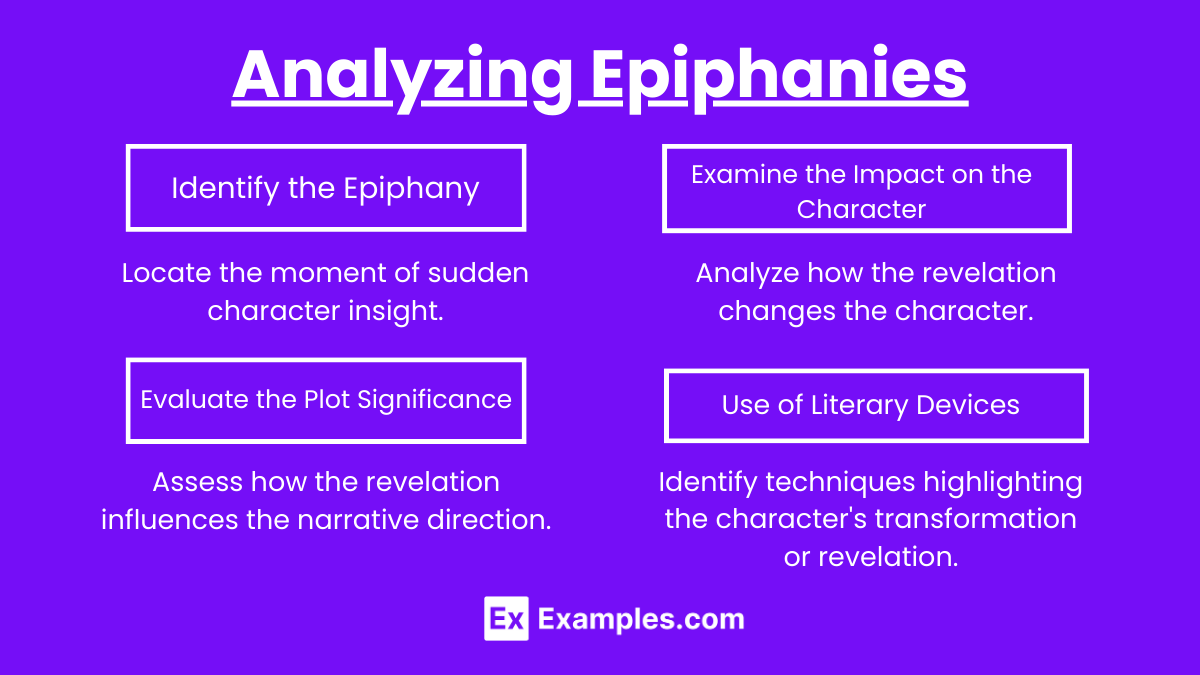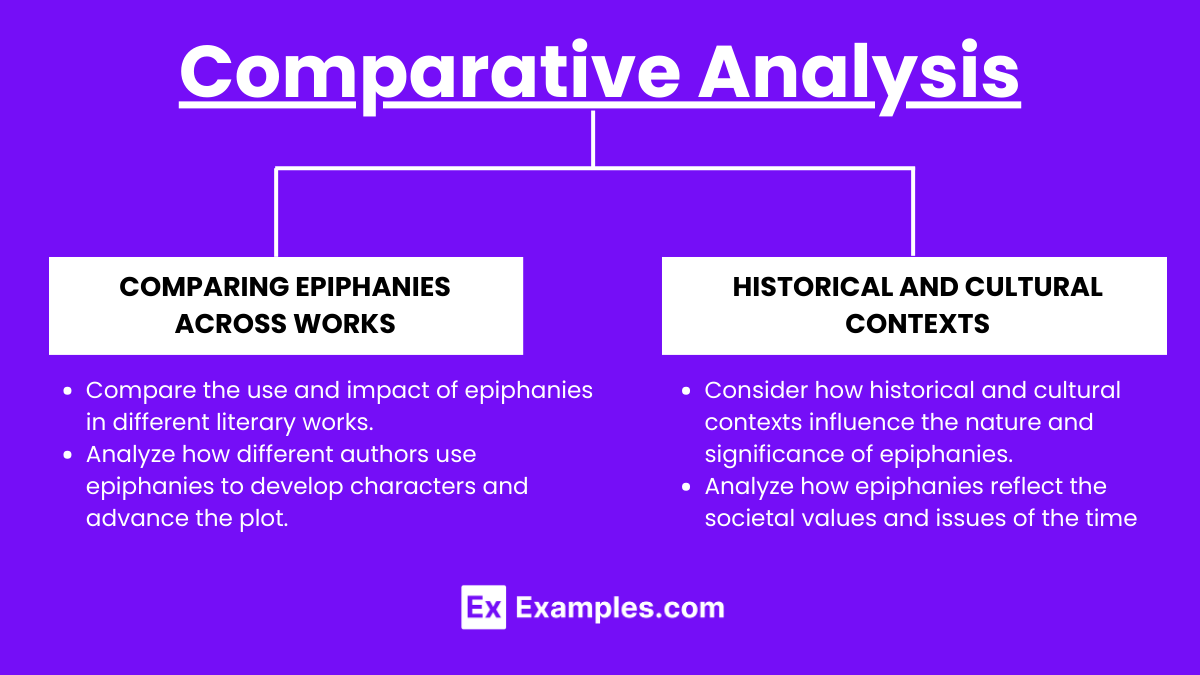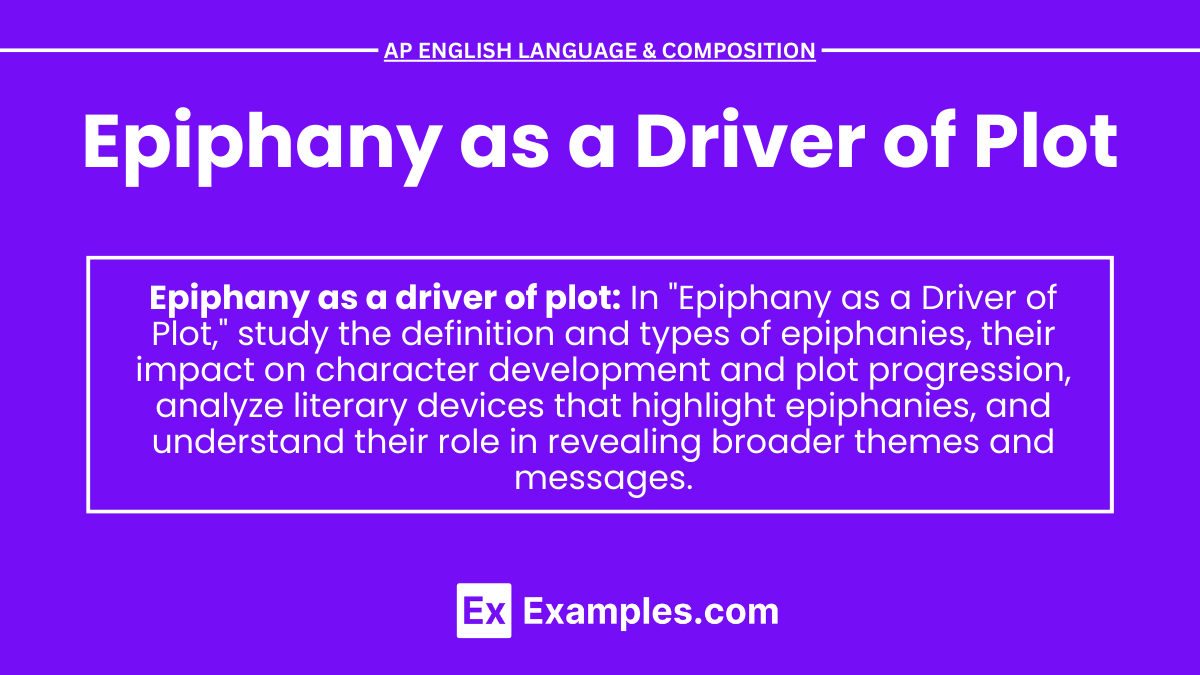Epiphany as a driver of plot

- Notes
In AP English Language and Composition, understanding epiphany as a driver of plot is essential. Crafting rhetorical sentences and cumulative sentences enhances your analysis in argumentative speech and argumentative writing. Epiphanies, or sudden revelations, can pivotally transform characters and propel narrative developments, enriching literary arguments and interpretations.
Learning Objectives
The learning objectives for analyzing epiphany as a driver of plot include mastering the use of cumulative sentences to build detailed analyses, crafting explanatory essays and expository essays to elucidate character revelations, constructing rhetorical sentences for persuasive arguments, formulating a final thesis statement that encapsulates your analysis, and applying critical thinking to explore the significance and impact of epiphanies in narrative development.
Key Concepts and Techniques
- Definition of Epiphany
- A sudden, profound realization or insight that transforms a character’s understanding.
- Often serves as a pivotal moment in the plot, leading to a change in direction or outcome.
- Function of Epiphany in Plot Development
- Acts as a catalyst for character change and progression.
- Can resolve conflicts, reveal hidden truths, or alter a character’s motivation.
- Types of Epiphanies
- Personal Epiphany: Involves a deep, personal realization about oneself or one’s circumstances.
- Situational Epiphany: A realization about a specific situation or event.
- Philosophical Epiphany: A broader, more abstract insight about life, society, or the world.
Analyzing Epiphanies

- Identify the Epiphany
- Locate the moment in the text where the character experiences the revelation.
- Analyze the context and circumstances leading up to the epiphany.
- Examine the Impact on the Character
- Assess how the epiphany changes the character’s thoughts, beliefs, and actions.
- Consider both immediate and long-term effects on the character’s development.
- Evaluate the Plot Significance
- Analyze how the epiphany influences the plot’s direction.
- Look for changes in the narrative’s pace, conflict resolution, or thematic focus.
- Use of Literary Devices
- Identify literary devices that highlight the epiphany (e.g., imagery, symbolism, foreshadowing).
- Examine how the author’s style and technique contribute to the epiphany’s impact.
Comparative Analysis

- Comparing Epiphanies Across Works
- Compare the use and impact of epiphanies in different literary works.
- Analyze how different authors use epiphanies to develop characters and advance the plot.
- Historical and Cultural Contexts
- Consider how historical and cultural contexts influence the nature and significance of epiphanies.
- Analyze how epiphanies reflect the societal values and issues of the time
In AP English Language and Composition, understanding epiphany as a driver of plot is essential. Crafting rhetorical sentences and cumulative sentences enhances your analysis in argumentative speech and argumentative writing. Epiphanies, or sudden revelations, can pivotally transform characters and propel narrative developments, enriching literary arguments and interpretations.
Free AP English Literature and Composition Practice Test
Learning Objectives
The learning objectives for analyzing epiphany as a driver of plot include mastering the use of cumulative sentences to build detailed analyses, crafting explanatory essays and expository essays to elucidate character revelations, constructing rhetorical sentences for persuasive arguments, formulating a final thesis statement that encapsulates your analysis, and applying critical thinking to explore the significance and impact of epiphanies in narrative development.
Key Concepts and Techniques
Definition of Epiphany
A sudden, profound realization or insight that transforms a character’s understanding.
Often serves as a pivotal moment in the plot, leading to a change in direction or outcome.
Function of Epiphany in Plot Development
Acts as a catalyst for character change and progression.
Can resolve conflicts, reveal hidden truths, or alter a character’s motivation.
Types of Epiphanies
Personal Epiphany: Involves a deep, personal realization about oneself or one’s circumstances.
Situational Epiphany: A realization about a specific situation or event.
Philosophical Epiphany: A broader, more abstract insight about life, society, or the world.
Analyzing Epiphanies

Identify the Epiphany
Locate the moment in the text where the character experiences the revelation.
Analyze the context and circumstances leading up to the epiphany.
Examine the Impact on the Character
Assess how the epiphany changes the character’s thoughts, beliefs, and actions.
Consider both immediate and long-term effects on the character’s development.
Evaluate the Plot Significance
Analyze how the epiphany influences the plot’s direction.
Look for changes in the narrative’s pace, conflict resolution, or thematic focus.
Use of Literary Devices
Identify literary devices that highlight the epiphany (e.g., imagery, symbolism, foreshadowing).
Examine how the author’s style and technique contribute to the epiphany’s impact.
Comparative Analysis

Comparing Epiphanies Across Works
Compare the use and impact of epiphanies in different literary works.
Analyze how different authors use epiphanies to develop characters and advance the plot.
Historical and Cultural Contexts
Consider how historical and cultural contexts influence the nature and significance of epiphanies.
Analyze how epiphanies reflect the societal values and issues of the time

